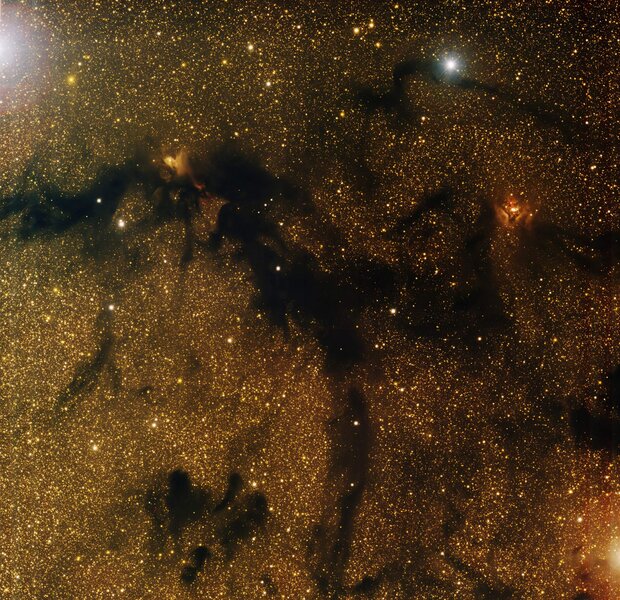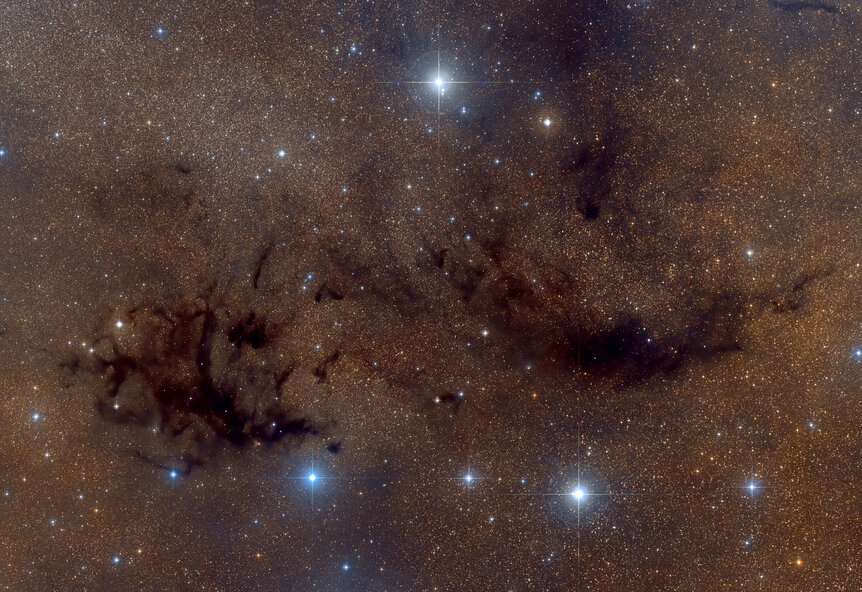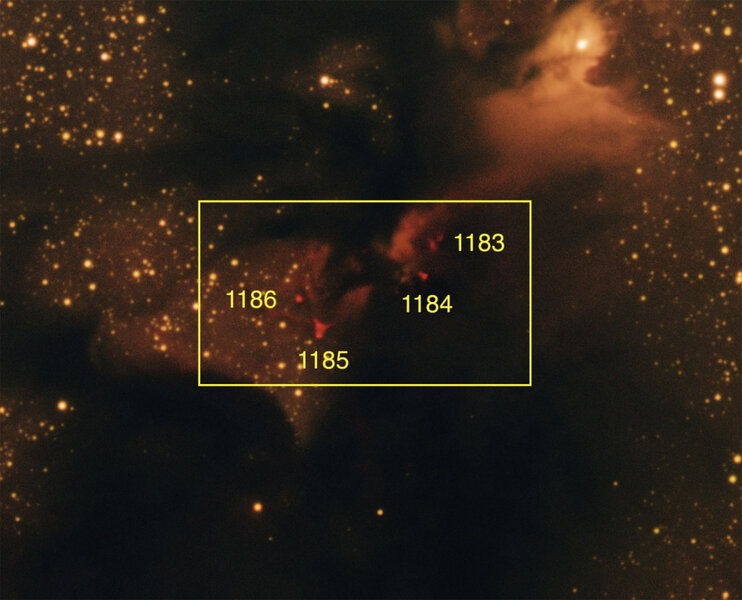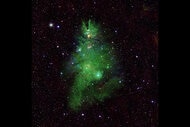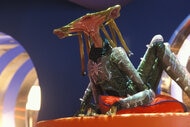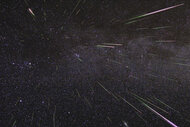Create a free profile to get unlimited access to exclusive videos, sweepstakes, and more!
Stunning art, cutting-edge science
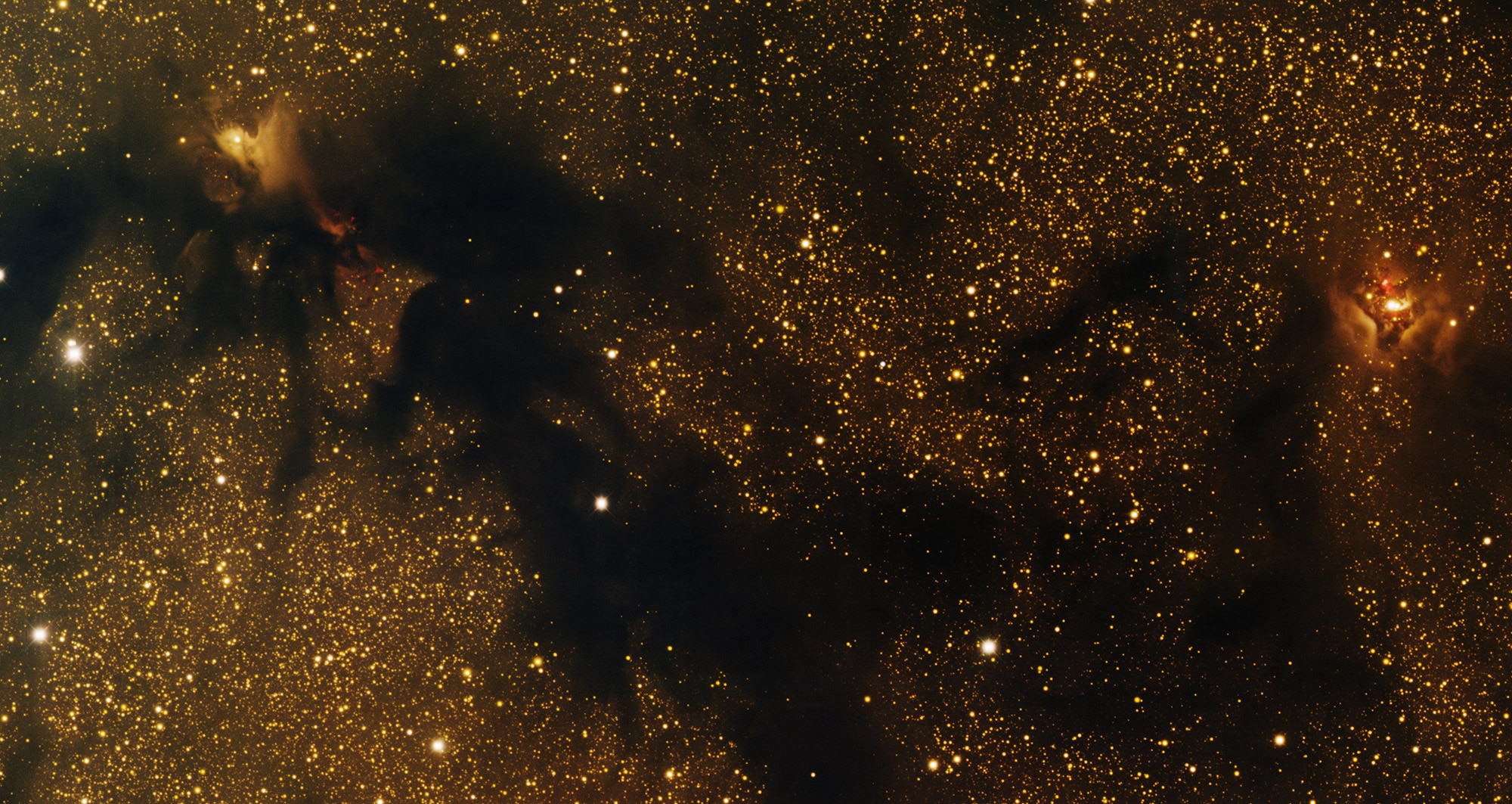
I'm not afraid to admit that one reason I love astronomy so much is due to its beauty. The sky is gorgeous, and it only gets more so when you train gigantic telescopes and digital cameras at it. There's a lot of skill involved in taking that data and turning it into the amazing images we're now accustomed to, and it takes a deep knowledge of the science as well as an eye for the artistry.
When I post such an image I generally also talk about the science of it; in general the observations were taken for science and the spectacular image is a bonus. But sometimes the science can be found because of the beauty. Such is the case for this wondrous image of Lynds Dark Nebula 673, or just LDN 673 for short.
Whoa. Like I said, gorgeous*. This region of the sky is in the constellation of Aquila, the Eagle, and this happens to lie right along the plane of our Milky Way galaxy. That means it's thick with stars, gas, and dust, which choke the image edge to edge with things to see. The dust is so thick that this area of the sky is called the Aquila Rift, because it appears to split the galaxy in two by blocking the light from stars behind it. It contains a lot of smaller clouds, some of them long and tendril-like as LDN 673 is.
In fact, that's something of a problem. If you're looking for a specific type of object in all that mess, how do you do it?
My friend Travis Rector was faced with just this task. He and his team wanted to find young stars in this region, specifically what are called Herbig-Haro objects. These young stars are still in the process of forming, and have a disk of material whirling around them. This rotating disk generates a powerful magnetic field that can grab onto the material and fling it up and out, away from the star along its poles. This material is screaming out, moving at several hundred kilometers per second, and usually forms long, narrow beams that slam into the material surrounding them. We see this as beautiful linear features that can extend for a significant chunk of a light year (astronomer Patrick Hartigan used Hubble images to put together some amazing short animations of their movement).
But they can also be shorter, or clumpy, or have other shapes, too. That can make finding these HH objects, as they're called, really hard. As you can see in the image, bright gas and dark, light-absorbing dust are everywhere, and fairly chaotic. Trying to pick out these small features is a needle in a haystack situation.
Ah, but this is where art and science collide. Kinda literally. The gas being blown away from the star in an HH object is very thin and hot. Gas like that emits light differently than a star does. Stars emit light at all different colors, continuously, while hot thin gas emits light in a small number of very specific colors. To make a sound analogy, a star is like hitting all the keys on a piano at once, while thin gas is like hitting just one or two keys. So how do you pick out the melody of the HH objects against the cacophony of stars?
Filters. One of the colors emitted by HH objects is a very narrow slice of red called H-alpha. Astronomers have filters that selectively block all the light except for that one color. So Travis and his team observed LDN 673 using four filters: One each for blue, green, and red light, and one for H-alpha. They then combined them, assigning each filter to a different color in the image. So they mapped the blue filter to blue, the green filter to green, (and here's the important bit), the red filter to orange, and the H-alpha filter to red.
By doing this, a lot of material glows orange in the image, but only the HH objects (and a few other types of gas) look red. That makes them much easier to pick out of the crowded image.
And it worked! They found an even dozen new HH objects, providing evidence of active star formation in the Aquila Rift. Interestingly, though these clouds are relatively nearby (probably less than 700 light years distant) and high in the sky for most observatories, this area hasn't been searched all that deeply for young stars. This new research shows that stars are indeed forming there in large numbers, and we just need to really look hard to find them.
While that's a chore, it's a decidedly lovely one. That should, I think, make it easier.
[P.S. Travis has taken a lot of simply stunning astrophotos. Do yourself a favor and take a look.]
*And, admittedly, a little spooky. It reminds me of the spirits that emerge at the end of Raiders of the Lost Ark before killing all the Nazis. Oh, sorry: Spoiler alert.
